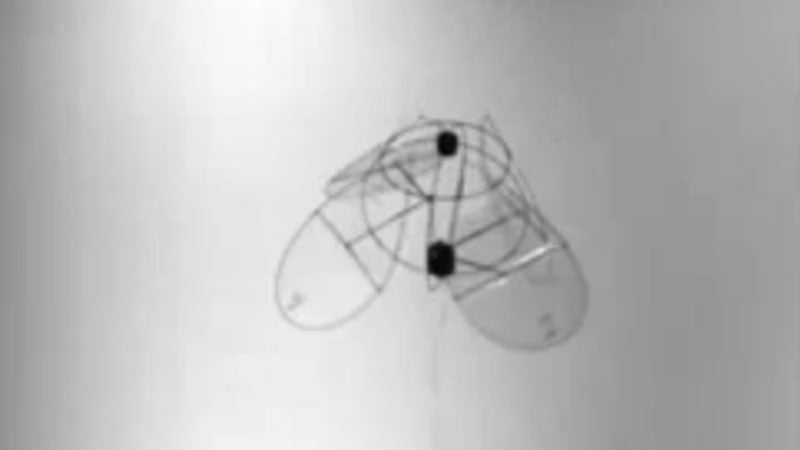New York University researchers have developed a that emulates the full-body propulsions of a jellyfish, translating the invasive invertebrate’s pulsating movements to a new fluid: air.
Just , the robot weighs two grams, and sports four wings that flap to keep it airborne. The device is intended for surveillance, search-and-rescue, and air quality appraisal, and was presented at the Fluid Dynamics Conference in Washington on Sunday.
“No one’s ever built this, and as far as we know nature never built it either to fly in air,” Leif Ristroph, assistant professor of mathematics at NYU who designed the machine, told . “Maybe that indicates that it’s a bad idea? In any case we got it to work, so maybe not that bad.”
Engineers have long modeled flying robots after the vulnerable flutter of insects, which requires the robots to constantly monitor their surroundings—for weather vagaries, for predators—and accordingly adjust their flying motions within fractions of a second. The jellyfish design, on the other hand, has no need for a feedback system. Its robust flapping keeps it afloat without much risk of outside interference.
“That’s the beauty of the design,” Ristroph said, “It doesn’t need a ‘smart’ design to help it recover.”
This simplicity bodes well for researchers, as one of their longstanding goals has been to create flying robots the size of a centimeter, that can more easily maneuver small spaces and go undetected. A straightforward design will put this achievement within reach, Ristroph says.


